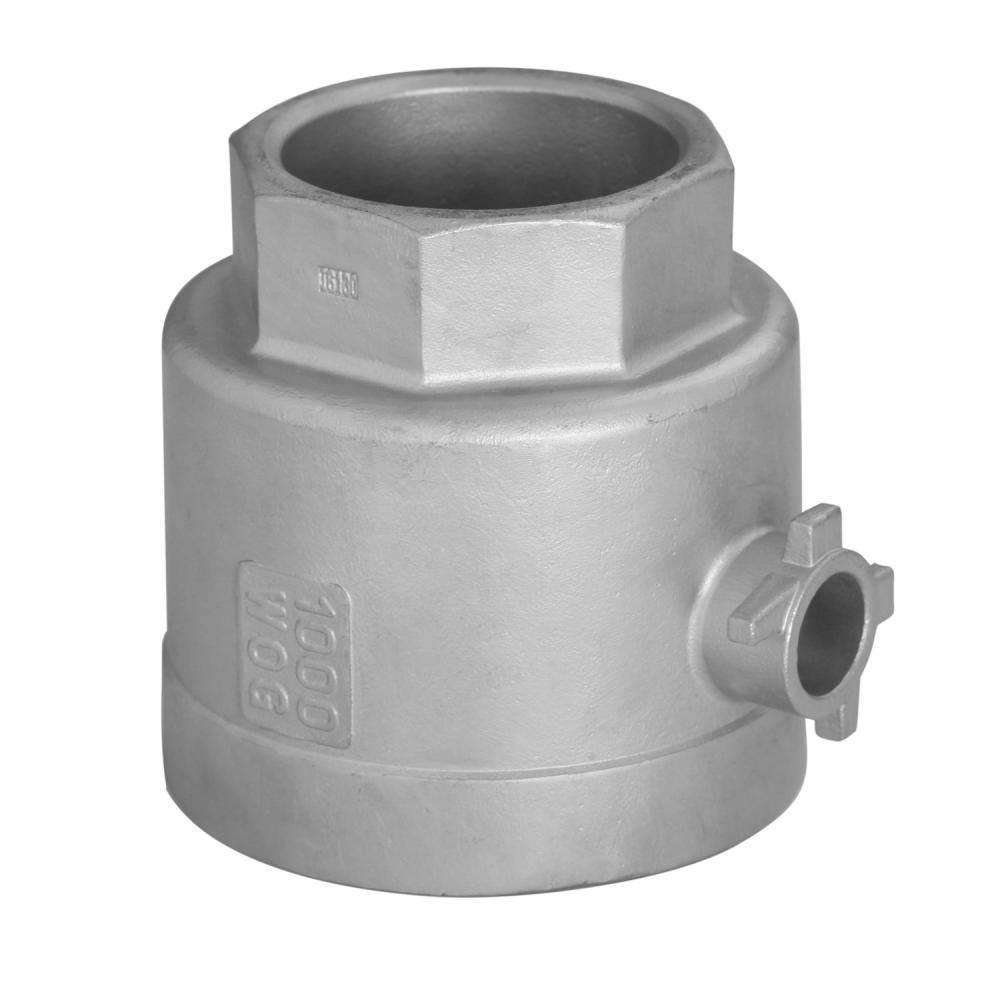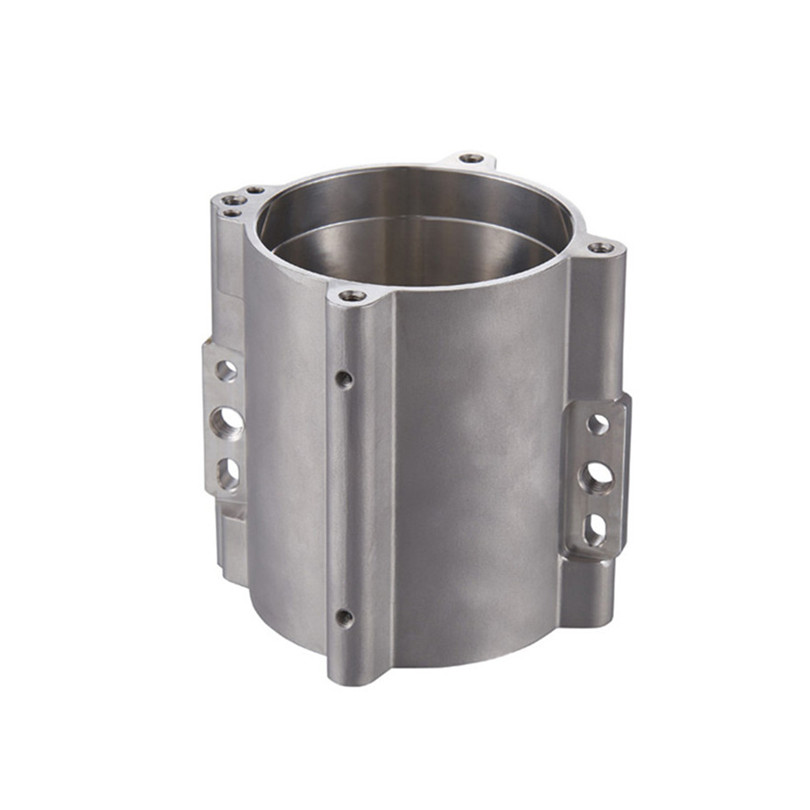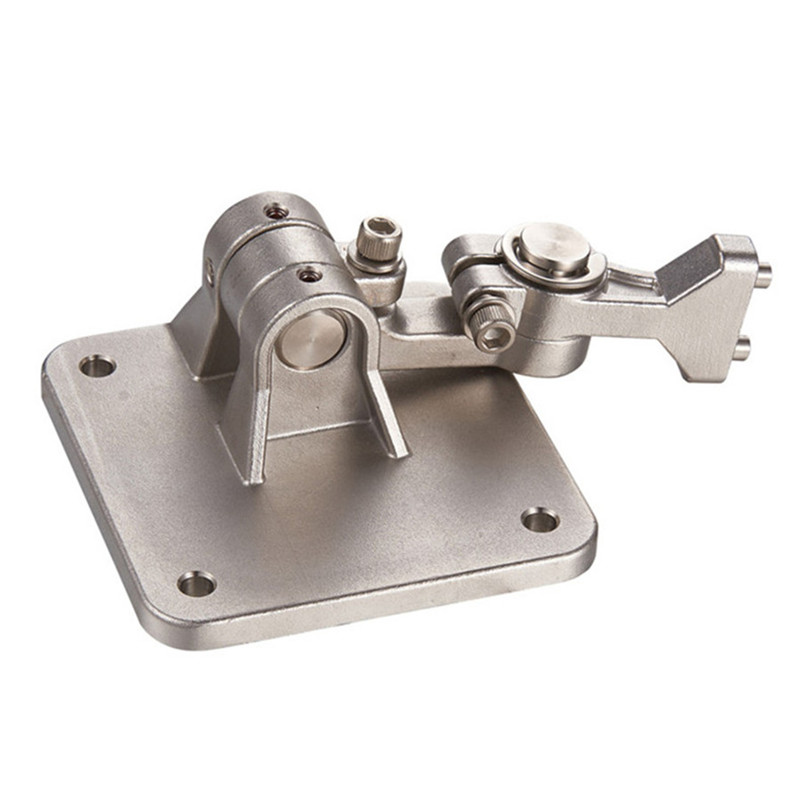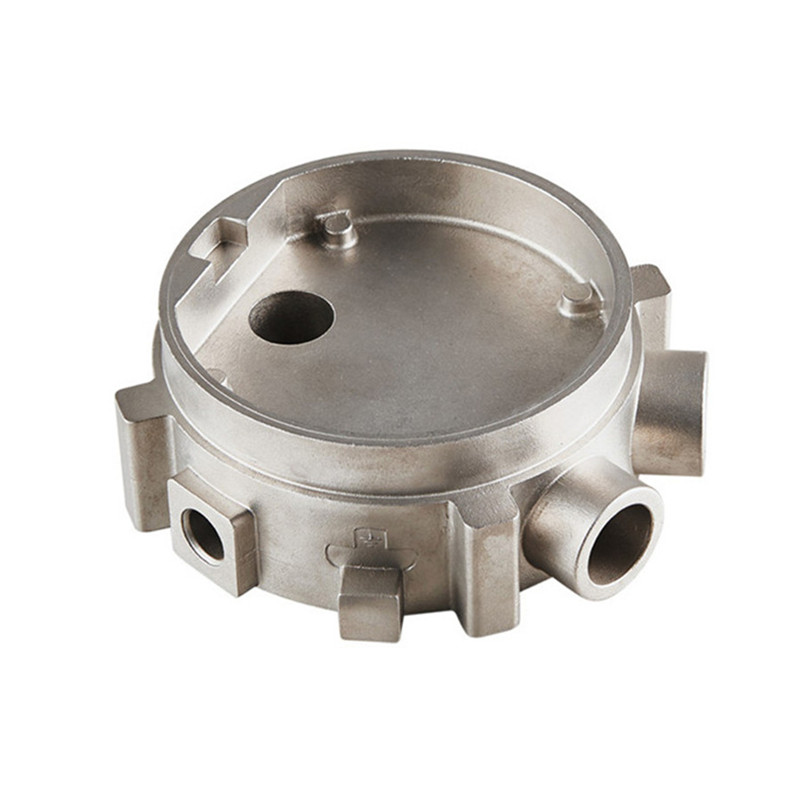Embracing Precision: The Core of Modern Manufacturing Through Advanced Casting Technologies
In the demanding landscape of B2B manufacturing, the efficacy and reliability of components are paramount. At the heart of creating intricate, high-performance metal parts lies casting, a foundational manufacturing process that shapes molten metal into desired forms. Specifically, investment casting, often referred to as ‘wax mold casting,’ stands out for its exceptional capability to produce parts with superior surface finish, dimensional accuracy, and complex geometries, particularly when dealing with challenging materials like stainless steel. This article delves into the nuances of this critical technology, focusing on its application for machinery parts, exploring industry trends, technical specifications, and real-world advantages.

Fig 1: Illustrative image of an advanced casting facility.
The selection of the right manufacturing technique is crucial for achieving optimal performance and cost-efficiency. While other methods like forging and CNC machining have their merits, investment casting offers distinct advantages for specific applications, especially where material integrity, intricate designs, and minimal post-machining are required. Our focus here is on the robust performance of Stainless Steel Wax Mold Casting for Machinery Part, a process meticulously engineered to meet the stringent demands of industries ranging from petrochemical to high-precision engineering.
The Precision of Investment Casting (Wax Mold Casting) Process Flow
Investment casting, or lost-wax casting, is revered for its ability to produce highly accurate and complex casting parts. This multi-step process, particularly effective for stainless steel, ensures exceptional detail and material integrity.
Process Steps:
- Wax Pattern Creation: A master die (tooling) is used to inject wax, creating an exact replica of the final part. Multiple wax patterns can be assembled onto a central sprue to form a “tree.”
- Shell Building: The wax tree is repeatedly dipped into a ceramic slurry and then covered with refractory sand. This process is repeated several times, with drying steps in between, to build a robust ceramic shell around the wax pattern.
- Dewaxing: The ceramic shell is heated in an autoclave or flash furnace, melting and draining out the wax. This “lost wax” technique leaves behind a hollow ceramic mold.
- Firing: The ceramic mold is fired at high temperatures (typically 900-1100°C) to remove residual wax, strengthen the shell, and prepare it for molten metal.
- Pouring: Molten metal (e.g., stainless steel, brass) is poured into the hot ceramic mold. The pre-heated mold ensures the metal fills intricate details without premature solidification.
- Knockout: Once the metal solidifies and cools, the ceramic shell is broken away from the metal casting using vibratory hammers or water blasting.
- Cut-off and Finishing: Individual casting parts are cut from the sprue. Gates are ground smooth, and subsequent operations like heat treatment, machining, surface finishing, and inspection are performed.
Key Aspects & Advantages:
- Product Materials: Stainless steel (e.g., 304, 316, 17-4PH), carbon steel, alloy steel, brass, bronze, and aluminum. The choice depends on specific application requirements for corrosion resistance, strength, and temperature.
- Manufacturing Processes: Primarily investment casting, complemented by CNC machining for tight tolerances, forging for critical strength, and various heat treatments.
- Testing Standards: Adherence to global standards like ISO 9001:2015 for quality management, ANSI, ASTM, and DIN for material specifications and testing. NDT methods (PT, MT, UT, RT) ensure internal integrity.
- Service Life: Stainless steel casting parts, especially those from advanced wax mold processes, offer exceptional durability and service life, often exceeding 20-30 years in non-extreme environments due to inherent corrosion resistance and robust mechanical properties.
- Target Industries: Petrochemical, oil & gas, metallurgy, marine, automotive, aerospace, medical, food processing, water supply & drainage, and general machinery.
- Advantages in Application:
- Corrosion Resistance: Essential for chemical processing, marine, and outdoor applications.
- Energy Saving: Near-net shape production reduces material waste and subsequent machining, leading to energy savings in the overall manufacturing lifecycle.
- Design Freedom: Complex geometries are easily achievable, allowing for integrated designs that reduce assembly steps and improve structural integrity.

Fig 2: A visual representation of the intricate steps involved in investment casting.
Technical Specifications & Advantages of Stainless Steel Wax Mold Casting
Stainless steel investment casting offers a compelling combination of mechanical strength, corrosion resistance, and aesthetic appeal. These properties make it ideal for demanding industrial applications.
Typical Stainless Steel Grades and Their Properties for Casting
| Stainless Steel Grade | Key Characteristics | Typical Applications | Tensile Strength (MPa) | Yield Strength (MPa) |
|---|---|---|---|---|
| 304 (CF8) | Good corrosion resistance, weldability, cost-effective. | Food & beverage, chemical equipment, general purpose valves. | 485 | 170 |
| 316 (CF8M) | Superior corrosion resistance (especially to chlorides), higher strength at elevated temperatures. | Marine, petrochemical, pharmaceutical, medical implants. | 485 | 170 |
| 17-4PH (CB7Cu-1) | High strength, good corrosion resistance, excellent hardness after heat treatment. | Aerospace components, valve parts, nuclear, medical instrumentation. | 1000-1400 (H900) | 900-1300 (H900) |
| 410 (CA15) | Good wear resistance, high strength, hardenable. | Steam and gas turbines, valve seats, general machinery. | 485 | 205 |
Advantages for Machinery Parts:
- Dimensional Accuracy: Investment casting yields parts with tolerances often within ±0.005 inches per inch, reducing the need for extensive post-machining. This translates to cost savings and faster production cycles.
- Superior Surface Finish: Typically 125 RMS or better, minimizing surface treatment requirements and improving aesthetic and functional performance, especially for moving casting parts.
- Material Versatility: Ability to process a wide range of ferrous and non-ferrous alloys, including exotic materials, to meet specific operational demands.
- Intricate Geometries: Ideal for complex shapes, undercuts, internal passages, and fine details that would be challenging or impossible to achieve with other methods.
- Reduced Waste: Near-net-shape casting minimizes material removal, leading to lower scrap rates and more efficient use of expensive alloys like stainless steel.
- Enhanced Mechanical Properties: The fine grain structure achieved through controlled solidification in investment casting often results in superior mechanical properties compared to other casting methods.
Application Scenarios & Industry Impact
Stainless Steel Wax Mold Casting is a cornerstone in numerous high-stakes industries, providing critical components that withstand harsh conditions and maintain performance over extended periods.

Fig 3: Example of complex industrial casting components.
- Petrochemical and Oil & Gas: Components for valves, pumps, flanges, and fittings demand exceptional corrosion resistance and high-pressure tolerance. Stainless steel casting parts ensure safety and longevity in aggressive chemical environments. For example, a recent industry report highlighted that stainless steel casting in the oil and gas sector contributed to a 15% reduction in maintenance costs due to enhanced material durability.
- Food & Beverage Processing: Strict hygiene and corrosion resistance requirements make stainless steel ideal for impellers, mixer parts, and various machine housings. These casting parts are inert and easy to sterilize, crucial for food safety.
- Medical and Pharmaceutical: Surgical instruments, prosthetic components, and specialized equipment often utilize 316L stainless steel investment casting due to its biocompatibility, precise dimensions, and ability to be polished to a mirror finish.
- Automotive and Aerospace: Turbocharger components, exhaust system parts, and structural brackets benefit from the lightweight yet strong properties of investment casting. For aerospace, specifically, high-strength stainless steels like 17-4PH are crucial for critical flight control and engine casting parts.
- Water Supply & Drainage: Components for pumps, flow meters, and filtration systems require excellent resistance to water corrosion and abrasion. Stainless steel casting parts provide reliable, long-term performance in municipal and industrial water infrastructure.
Industry Trends in Metal Casting
The casting industry is dynamic, driven by innovation and evolving demands. Several key trends are shaping its future, emphasizing efficiency, sustainability, and advanced material capabilities.
- Additive Manufacturing Integration: While not a direct replacement, 3D printing is increasingly used to create wax patterns or master molds for investment casting, accelerating prototyping and reducing tooling costs for complex geometries. This hybrid approach streamlines development for custom casting parts.
- Advanced Simulation Software: Sophisticated simulation tools are now standard, predicting metal flow, solidification patterns, and potential defects before physical production. This reduces trial-and-error, saving time and resources in all forms of casting, including iron casting and brass casting.
- Sustainable Practices: Environmental concerns drive the adoption of greener casting processes, including recycling of molding materials, energy-efficient furnaces, and reduced waste generation. Foam casting (e.g., lost foam casting) is an example of a process that can offer environmental benefits by reducing sand usage.
- Automation and Robotics: From mold handling to finishing operations, automation enhances precision, consistency, and safety in casting foundries.
- High-Performance Alloys: Continuous research into new alloys with improved properties (e.g., higher temperature resistance, greater strength-to-weight ratios) expands the capabilities of casting for critical applications.

Fig 4: Modern casting simulation and design capabilities.
Product Spotlight: Stainless Steel Wax Mold Casting for Machinery Part
Our Stainless Steel Wax Mold Casting for Machinery Part represents the pinnacle of precision engineering, delivering components that meet the rigorous demands of industrial machinery.
Key Specifications and Features:
| Parameter | Specification/Feature |
|---|---|
| Process Type | Investment Casting (Lost Wax Casting) |
| Material Grades | Stainless Steel (304, 316, 316L, 17-4PH, 410, Duplex SS), Carbon Steel, Alloy Steel. |
| Weight Range | 0.01 kg to 50 kg (depending on part complexity) |
| Dimensional Tolerance | ISO 2768-mK, CT5-CT7 per ISO 8062, typically ±0.005 inch/inch. |
| Surface Finish | Ra 3.2 µm (125 RMS) to Ra 1.6 µm (63 RMS) without additional polishing. |
| Heat Treatment | Annealing, Normalizing, Quenching & Tempering, Age Hardening. |
| Post-Casting Operations | CNC Machining, Polishing, Electropolishing, Passivation, Assembly. |
| Quality Certifications | ISO 9001:2015, Material Certifications (MTRs), NDT (PT, MT, UT, RT) reports available. |
| Applications | Pump & valve components, marine hardware, medical devices, automotive parts, machinery brackets, food processing equipment. |
Our commitment to quality is underpinned by stringent adherence to international standards and continuous process improvement. Each casting part undergoes rigorous inspection to ensure it meets both industry benchmarks and specific client requirements, offering unmatched reliability and performance.
Customized Casting Solutions
Recognizing that every industrial application has unique requirements, we specialize in providing bespoke casting solutions. Our engineering team works closely with clients from concept to final product, ensuring that each casting part is perfectly tailored to its intended function.
- Design Optimization: Collaborative design reviews using DFM (Design for Manufacturability) principles to optimize part geometry for casting, reducing material usage and improving performance.
- Material Selection: Expert guidance on selecting the optimal stainless steel alloy or other metals, considering factors like operating environment, mechanical loads, temperature, and corrosion resistance.
- Prototyping Services: Rapid prototyping using 3D printing for wax patterns allows for quick iteration and validation of designs before committing to production tooling.
- Secondary Operations: Offering comprehensive secondary services, including precision CNC machining for critical features, heat treatment for desired mechanical properties, and various surface finishes to meet specific aesthetic or functional needs.
- Rigorous Testing: Tailored testing protocols, including mechanical property tests, chemical analysis, non-destructive testing (NDT), and dimensional inspections, ensure every custom casting part meets exacting standards.
Our agile manufacturing process and deep technical expertise enable us to deliver complex, high-quality customized casting solutions efficiently, from low-volume specialized casting parts to high-volume production runs.
Vendor Comparison & Strategic Partnership
Choosing the right casting vendor is a critical decision that impacts product quality, lead times, and overall project success. A strategic partner offers not just products, but expertise and reliability.
Key Considerations for Vendor Selection:
| Feature | Our Offering (Mingda Metals) | Typical Competitor |
|---|---|---|
| Quality Certifications | ISO 9001:2015, Material Certs (MTRs), Comprehensive NDT. | Basic ISO, limited NDT, less detailed MTRs. |
| Experience (Years) | Over 20 years specializing in precision metal casting. | Varies, often newer or less specialized. |
| Technical Expertise | In-house engineering, DFM, simulation, material science. | Limited engineering support, reliance on client designs. |
| Customization Options | Full customization, prototyping, diverse secondary ops. | Standardized products, limited customization. |
| Lead Time & Fulfillment | Optimized for efficiency, consistent on-time delivery. | Variable, potential for delays. |
| After-Sales Support | Dedicated support, warranty, issue resolution. | Often limited or outsourced support. |
Our dedication to quality, coupled with over two decades of industry experience and a robust commitment to customer satisfaction, positions us as a preferred partner for critical stainless steel casting parts. We boast a track record of serving prominent clients across various industries, reinforcing our authoritative standing in the metal casting sector.
Real-World Application Case Studies
Demonstrating our capabilities through tangible examples showcases the practical advantages of our Stainless Steel Wax Mold Casting solutions.
Case Study 1: High-Pressure Valve Components for Petrochemical Industry
Challenge: A leading petrochemical client required complex valve bodies and internal components that could withstand extreme pressures (up to 10,000 psi) and highly corrosive media (acidic crude oil). Traditional machining proved cost-prohibitive due to intricate internal passageways and material waste.
Solution: We provided custom 316L Stainless Steel Wax Mold Casting, leveraging our expertise in DFM to optimize the part for near-net shape production. Precise process control ensured superior mechanical properties and internal integrity, verified by extensive NDT (UT and RT).
Outcome: The client achieved a 25% cost reduction on the finished casting parts, a 30% reduction in lead time compared to previous methods, and superior long-term performance, significantly extending the service life of their valve assemblies in critical applications.
Case Study 2: Medical Device Housings with Intricate Details
Challenge: A medical device manufacturer needed compact, biocompatible stainless steel housings for a new diagnostic instrument. The design featured extremely fine internal channels and thin walls, requiring exceptional dimensional accuracy and a flawless surface finish.
Solution: Utilizing precision investment casting with 316L stainless steel, we developed a highly repeatable process for the intricate geometry. Advanced wax injection and shell-building techniques ensured capture of all fine details. Post-processing included electropolishing to achieve the required medical-grade surface finish (Ra < 0.8 µm).
Outcome: The project delivered a complex casting part with precise internal features, eliminating the need for multi-part assembly. This resulted in a more robust and sterilizable housing, reducing the client’s assembly time by 40% and enhancing product reliability in a sensitive application.

Fig 5: Example of a precision-engineered casting part for machinery.
Ensuring Trust: Lead Time, Warranty, & Support
Building trust in B2B relationships hinges on transparent operations and unwavering commitment to client success. We prioritize these aspects to ensure a reliable partnership.
- Lead Time & Fulfillment: Our streamlined manufacturing process, coupled with robust supply chain management, allows us to offer competitive lead times.
- Tooling/Pattern Development: 4-6 weeks (for new custom casting parts).
- First Article Inspection (FAI): 2-3 weeks after tooling completion.
- Production Run: 3-5 weeks for typical orders, depending on volume and complexity.
We maintain an impressive on-time delivery rate, crucial for minimizing project delays for our clients.
- Warranty Commitments: All our stainless steel casting parts are backed by a comprehensive warranty against material and manufacturing defects. Our commitment ensures that products meet agreed-upon specifications and performance criteria for their intended service life. Specific terms are detailed in our sales agreements.
- Customer Support Information: Our dedicated customer service team is available to assist with technical queries, order tracking, and any post-delivery support. We offer multi-channel support including direct phone lines, email, and dedicated account managers to ensure prompt and effective communication. Our goal is to provide seamless support throughout the product lifecycle.
Frequently Asked Questions (FAQ)
Q: What is the primary difference between investment casting and sand casting?
A: Investment casting (wax mold casting) offers significantly higher dimensional accuracy, finer surface finish, and the ability to produce much more complex geometries than sand casting. While sand casting is generally more cost-effective for larger, simpler casting parts, investment casting excels for precision components and expensive alloys.
Q: Can you work with proprietary stainless steel alloys for custom casting parts?
A: Yes, absolutely. We have extensive experience working with a broad spectrum of standard and custom stainless steel alloys. Our metallurgists can assess the feasibility and required processing for proprietary alloys, ensuring optimal mechanical properties and performance for your specific casting part.
Q: What is the typical lead time for new tooling development?
A: For complex custom designs, new tooling development typically ranges from 4 to 6 weeks. This timeframe includes design, CNC machining of the die, and initial trial runs to produce the wax patterns for your casting parts. Expedited options may be available depending on project specifics.
Q: How do you ensure the quality and integrity of your casting parts?
A: We implement a multi-stage quality control process. This includes chemical analysis of raw materials, in-process dimensional checks, visual inspection, and comprehensive final inspections. Non-destructive testing (NDT) such as Penetrant Testing (PT), Magnetic Particle Testing (MT), Ultrasonic Testing (UT), and Radiographic Testing (RT) are performed as required by standards or client specifications to verify internal integrity and surface quality of each casting part.
Q: What are the size limitations for your stainless steel wax mold casting?
A: Our capabilities allow for casting parts ranging from very small, intricate components weighing a few grams, up to larger industrial casting parts weighing approximately 50 kg. The specific size and complexity depend on the design and material, and we can discuss your project’s unique requirements to determine feasibility.
Citations
- Campbell, J. (2003). Castings Practice: The Ten Rules of Castings. Elsevier Butterworth-Heinemann.
- ASM Handbook, Volume 15: Casting. (1988). ASM International.
- Stainless Steel World Magazine. (Monthly). Recent developments in high-performance stainless steels for demanding applications.
- Modern Casting Magazine. (Monthly). Reports on global foundry trends and technological advancements.
- Kardoulaki, E., & Goudelis, A. (2018). Investment Casting of Stainless Steel Alloys: A Review. Journal of Manufacturing Processes, 31, 350-360.
Hebei Mingda International Trading Company is a trading company which is specialized in castings, ODM Ductile Iron Manhole Cover forgings and machinery parts.Our products include all kinds of raw castings to be made of ductile iron , grey iron , brass , stainless steel and aluminums, machined castings and forged parts .ODM Ductile Iron Covers To make these parts according to the customers’Custom Iron Casting drawings , we have relative suitable production craft and equipments, such as resin sand , sand mould , hot core boxes , lost-wax , lost –foam and so on Iron Casting Manufacturer Custom.Specially for hydrant bodies and valves’Ductile Iron Manhole Cover Manufacturer bodies, we have collected rich experience for these products in the past 16 year’s actual production, Now we are proud of our products with good surface and high quality material. Iron Casting ManufacturerWhatever,we have been trying our best to provide our customers with better quality castings by improving production crafts and more careful quality control.Cast Iron Castings Manufacturer|super blog